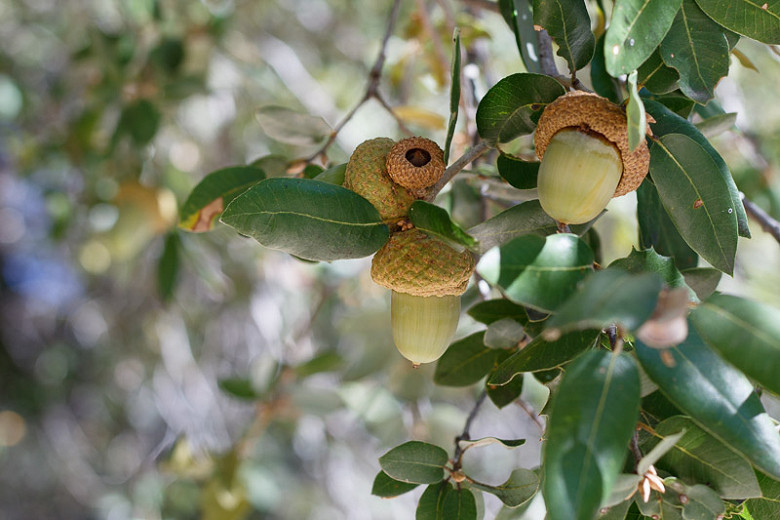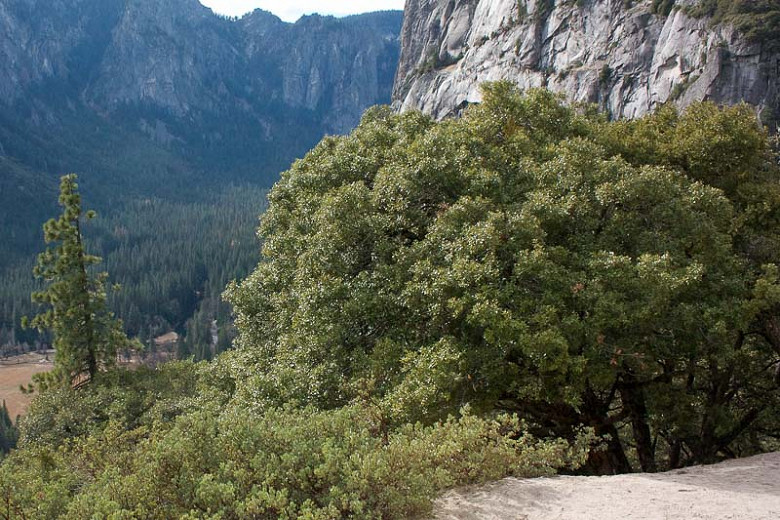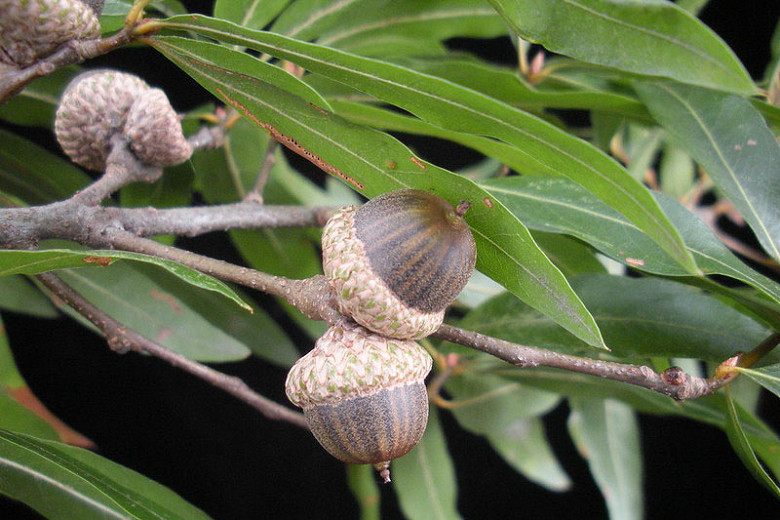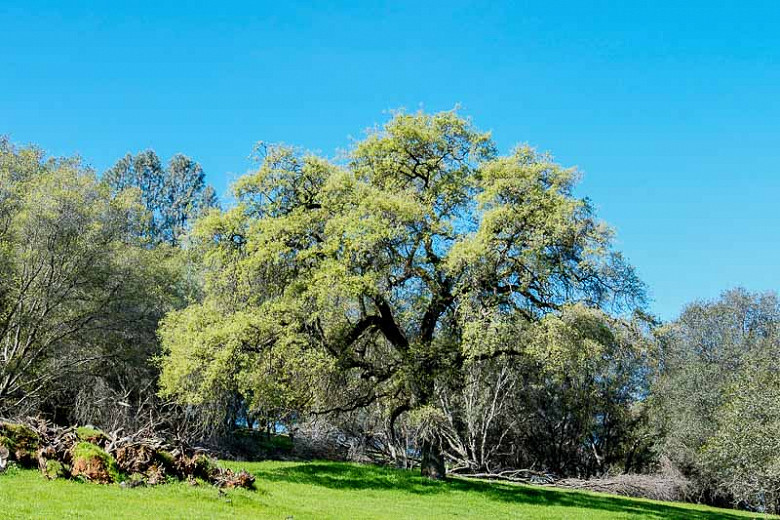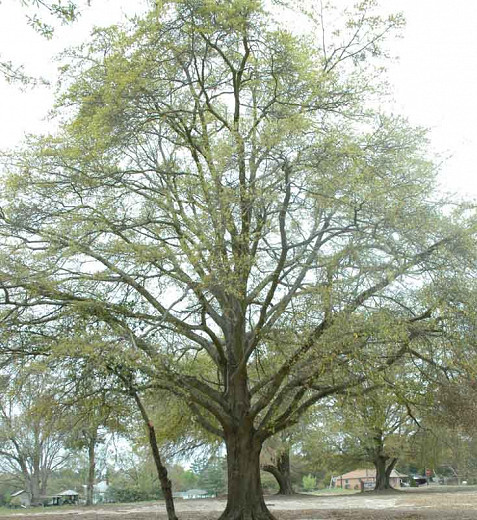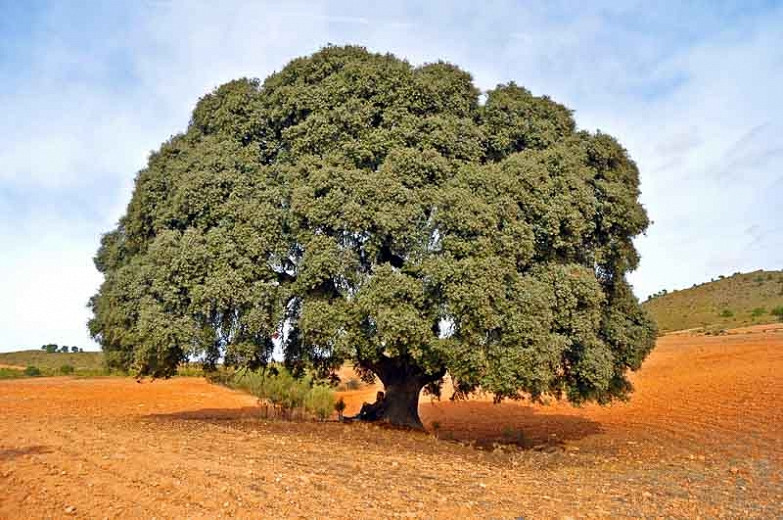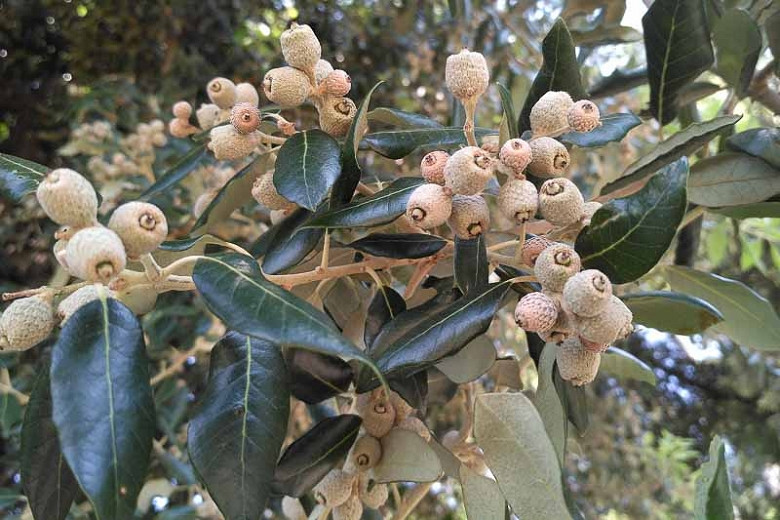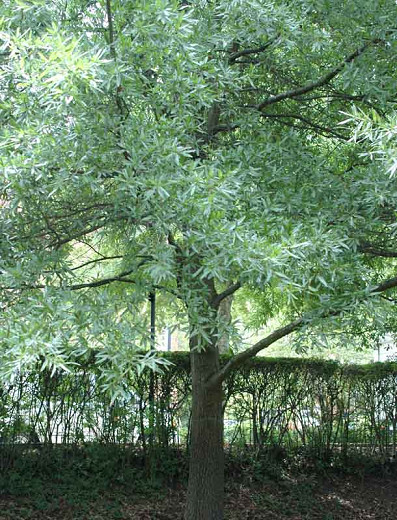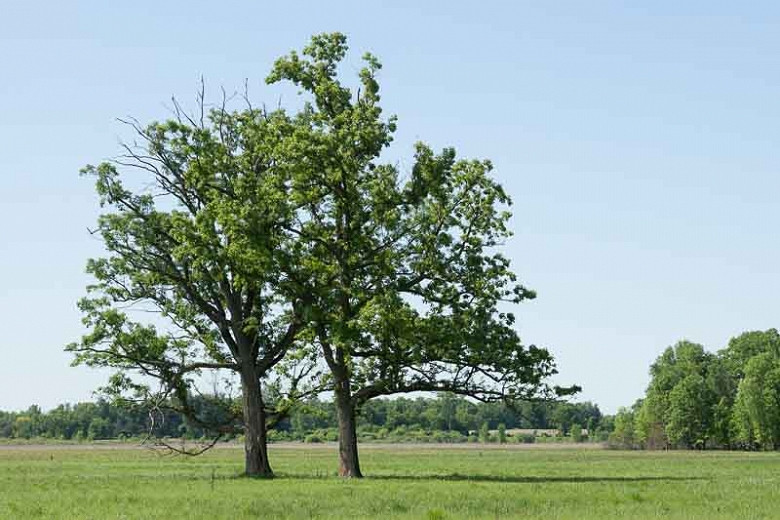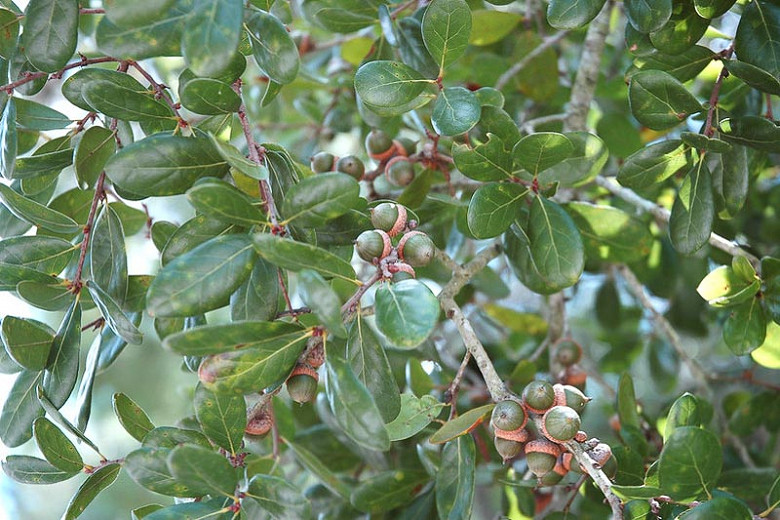Quercus chrysolepis (Canyon Live Oak)
Magnificent and long-lived (up to 300 years), Quercus chrysolepis (Canyon Live Oak) is a variable evergreen shrub or tree depending on its location. It grows as a shrub and may form dense thickets on mountain slopes and ridgetops, and it grows as a tree in sheltered, moist canyons. In open areas the crown is dense, wide-spreading, and reaches nearly to the ground. In closed stands the crown is smaller in diameter and concentrated in the top half of the tree. The bark is smooth to flaky, fissured in small stems and more deeply furrowed in large stems. The leaves are thick, leathery, oblong, up to 4 in. long (10 cm), usually spiny in young trees and smooth in old trees, although both types can appear on the same tree. The foliage color varies from blue-green to glossy, dark-green. The male flowers are in catkins while the female flowers are solitary or in sparsely-flowered spikes. The ellipsoidal, light chestnut brown acorns are a valuable source of food for small mammals and birds. Canyon Live Oak is well adapted to arid conditions thanks to its deep and extensive root system that access deep sources of water during summer drought. Canyon Live is considered to be the most beautiful of the California oaks. Open-grown trees with their wide crowns of evergreen leaves make attractive urban trees. The ability of Canyon Live Oak to grow on steep, rocky, moving slopes makes it an excellent stabilizer of soils on steep slopes.
- Grows up to 30-80 ft. tall (9-24 m) and 30-60 ft. wide (9-18 m).
- A full sun to part shade lover, this tree is easily grown in very acidic to slightly alkaline, well-drained, loam or sand or clay soils. Drought tolerant once established, it is also moderately tolerant of salt spray.
- May be affected by sudden oak death, crown rot, mistletoe, armillaria and invasive shot hole borer, goldspotted oak borer, aphids, caterpillars.
- Propagate by seed. No pretreatment is necessary. Plant immediately – outdoors or in deep containers to accommodate long initial taproot. Many oaks require cold temperatures to initiate shoot development.
- Toxic to horses.
- Native to Oregon, California, Nevada, Arizona, and Mexico.
Requirements
| Hardiness | 7 – 9 |
|---|---|
| Climate Zones | 3, 3A, 3B, 4, 5, 6, 7, 8, 9, 10, 11, 14, 15, 16, 17, 18, 19, 20, 21, 22, 23, 24 |
| Plant Type | Shrubs, Trees |
| Plant Family | Quercus – Oaks |
| Exposure | Full Sun, Partial Sun |
| Season of Interest | Spring (Early,Mid,Late)Summer (Early,Mid,Late)FallWinter |
| Height | 30' – 80' (9m – 24m) |
| Spread | 30' – 60' (9m – 18m) |
| Water Needs | Low |
| Maintenance | Low |
| Soil Type | Clay, Loam, Sand |
| Soil pH | Acid, Neutral |
| Soil Drainage | Well-Drained |
| Characteristics | Showy, Evergreen |
| Native Plants | United States, California, Pacific Northwest, Oregon, Southwest, Nevada, Arizona, New Mexico |
| Tolerance | Deer, Drought, Dry Soil, Salt |
| Attracts | Birds, Butterflies |
| Garden Uses | Banks and Slopes |
| Garden Styles | City and Courtyard, Coastal Garden, Prairie and Meadow |
